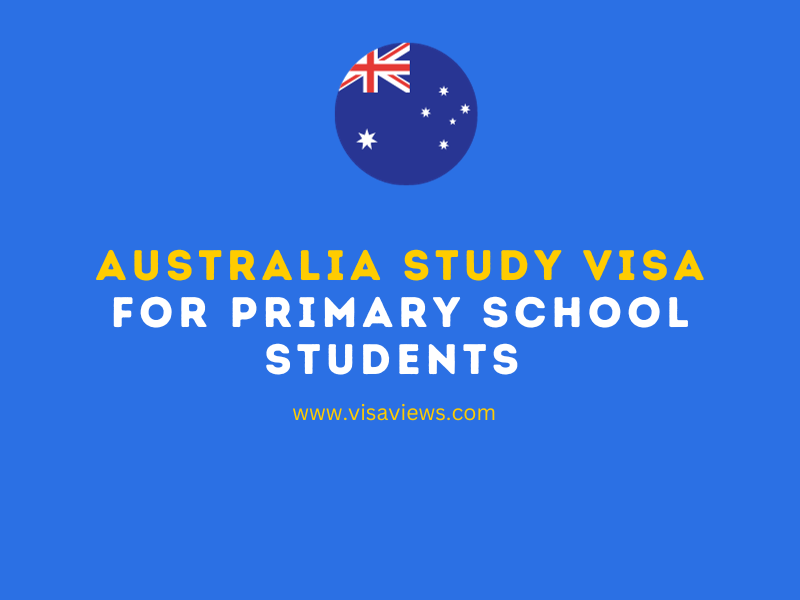How to get an Australian Student Visa for Primary School in Australia
Click here to join now
Australia, known for its high-quality education system, is a popular destination for families seeking a world-class education for their children. If you’re considering enrolling your child in a primary school in Australia, understanding the process of obtaining a student visa is crucial. In this article, we will guide you through the key steps and requirements for securing a student visa for primary school students in Australia.
Understanding the Student Visa for Primary School
The Australian student visa (subclass 500) allows children to study in Australia at the primary school level. This visa is designed for international students who are enrolled in a course of study in Australia, including young learners in primary education.
Eligibility Criteria
To be eligible for a student visa for primary school in Australia, the following criteria must be met:
- Enrollment in a Registered School: The child must be enrolled in a full-time course at a primary school that is registered with the Australian government.
- Age Requirements: Generally, primary school students are aged between 5 and 12 years. However, specific age requirements may vary depending on the state or territory.
- Welfare Arrangements: For students under 18, adequate welfare arrangements must be in place. This could include living with a parent, legal custodian, or a suitable relative aged over 21.
Application Process
- Secure an Offer from a School: Obtain a Confirmation of Enrolment (CoE) from an Australian primary school.
- Arrange Welfare: Ensure appropriate welfare arrangements are in place for the child.
- Gather Required Documents: This includes the CoE, evidence of financial capacity, health insurance, and other relevant documents.
- Apply for the Visa: Submit the student visa application online through the Australian Government Department of Home Affairs website.
Financial Requirements
One of the key aspects of the student visa application is proving financial capacity. You must demonstrate that you have enough funds to cover:
- Tuition fees
- Living costs
- Travel expenses
- Costs for accompanying family members, if applicable
Health Insurance
It’s mandatory for international students, including primary school students, to have Overseas Student Health Cover (OSHC) for the duration of their stay in Australia. This insurance covers medical and hospital expenses.
English Language Proficiency
While English language proficiency is a requirement for higher education, it is generally not a stringent requirement for primary school students. However, schools may have their own assessment methods to ensure that the child can cope with the curriculum.
Accompanying Family Members
Parents or guardians who wish to accompany their child to Australia can apply for a guardian visa (subclass 590). This visa allows a parent or guardian to live in Australia with the child who is studying on a student visa.
Welfare Arrangements
For students under 18, you must demonstrate that suitable welfare arrangements are in place. This can include:
- Nominating a suitable relative to provide accommodation, general welfare, and support
- Arranging for the school to approve the child’s welfare arrangements
Application Timeline and Fees
The processing time for a student visa can vary, so it’s advisable to apply well in advance of the school start date. The visa application fee is also an important consideration and can be checked on the official Department of Home Affairs website.
Conclusion
Securing a student visa for primary school in Australia involves careful planning and attention to detail. From ensuring the right welfare arrangements to meeting financial and health insurance requirements, each step is crucial for a successful application. With the right preparation, your child can embark on an enriching educational journey in Australia.
Disclaimer: This article provides a general overview of obtaining a student visa for primary school in Australia. Visa requirements and policies are subject to change, so it’s important to consult the latest information from the Australian Government’s Department of Home Affairs or seek advice from a qualified immigration consultant for personalized guidance.

